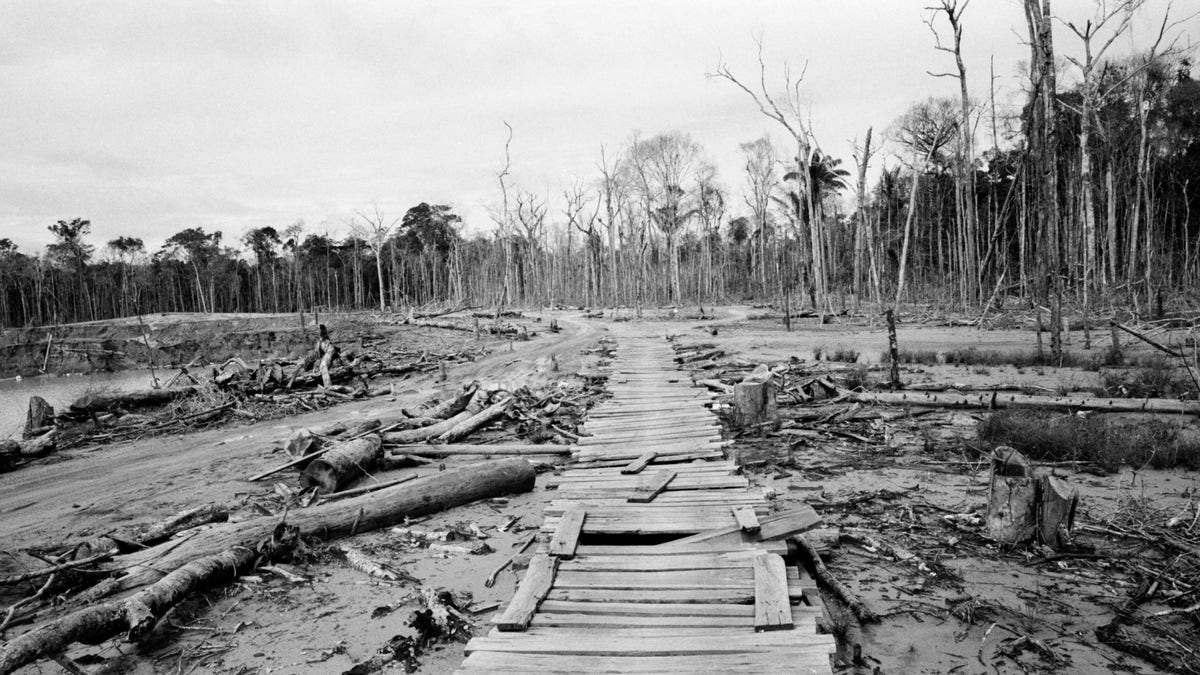
May 16, 2014: Wood slats serve as a makeshift walkway built by wildcat miners, at an abandoned mining camp, in La Pampa in Peru's Madre de Dios region. (AP)
TAMBOPATA, Peru – A decade of illegal gold mining has transformed large areas of virgin Peruvian rainforest into pocked, denuded, mercury-poisoned wastelands.
Excavations to separate gold flecks from tons of earth have left holes big enough to swallow a half-dozen buses. Mercury, a neurotoxin used to bind the gold, pervades the local food chain, reaching humans through the fish they eat.
The ruined lands scar the southeastern region of Madre de Dios, a mecca of biodiversity whose natural marvels lure eco-tourists and where several tribes live in voluntary isolation.
Thousands of people have left the region in recent months as the government has cracked down on illegal mining, dynamiting mining machinery, dismantling brothels and cutting off gasoline supplies.
Illegal mining is the No. 2 cause of deforestation in Peru, after clear-cutting for agriculture, Environmental Minister Manuel Pulgar-Vidal said on the eve of the Dec. 1-12 U.N. climate conference that his nation is hosting.
"It is terrible for the nearly irremediable wounds it causes to the forest," he said.
Peru is more than 60 percent rainforest and only Brazil has a larger share of the Amazon jungle, whose preservation is vital to mitigating global damage from climate change.
Deforestation and land conversion account for about 40 percent of Peru's greenhouse gas emissions. The country has vowed to halt deforestation by 2021, and Norway in September pledged $300 million toward that goal.
Yet Peru's stewardship of its rainforest has been questioned by environmentalists, and deforestation appears to be on the rise.
University of Maryland scientist Matthew Hansen, who tracks deforestation globally, said preliminary data indicates Peru lost an average of 770 square miles of forest annually over the past two years, up from 490 square miles a year during the previous decade.
As part of the agreement with Norway on halting deforestation, Peru said it would grant native communities ownership of a total of 19,300 square miles. Environmentalists argue that native communities are better stewards of the world's forests than governments or private interests but say successive Peruvian government have been stingy for the past two decades in granting titles.
Granting that much land to the more than 600 native communities that seek titles will not be easy. Regional governments, many of which have turned a blind eye to deforestation-related corruption and illegal logging, were given jurisdiction over land titling in 2008.
